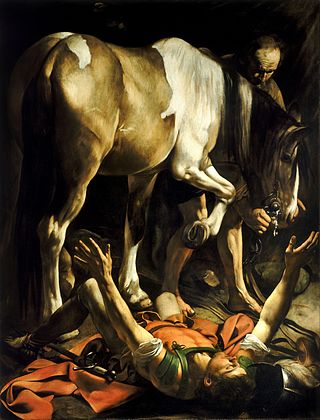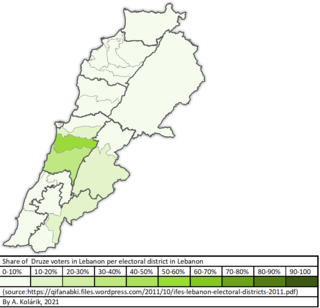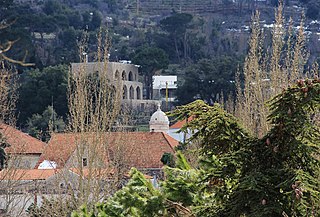Pentecostalism or classical Pentecostalism is a Protestant Charismatic Christian movement that emphasizes direct personal experience of God through baptism with the Holy Spirit. The term Pentecostal is derived from Pentecost, an event that commemorates the descent of the Holy Spirit upon the Apostles and other followers of Jesus Christ while they were in Jerusalem celebrating the Feast of Weeks, as described in the Acts of the Apostles.

Persecution is the systematic mistreatment of an individual or group by another individual or group. The most common forms are religious persecution, racism, and political persecution, though there is naturally some overlap between these terms. The inflicting of suffering, harassment, imprisonment, internment, fear or pain are all factors that may establish persecution, but not all suffering will necessarily establish persecution. The threshold of severity has been a source of much debate.

In Greco-Roman geography, Iberia was an exonym for the Georgian kingdom of Kartli, known after its core province, which during Classical Antiquity and the Early Middle Ages was a significant monarchy in the Caucasus, either as an independent state or as a dependent of larger empires, notably the Sassanid and Roman empires. Iberia, centered on present-day Eastern Georgia, was bordered by Colchis in the west, Caucasian Albania in the east and Armenia in the south.
Christianity and other religions documents Christianity's relationship with other world religions, and the differences and similarities.

Christianity in Iran dates back to the early years of the religion during the time of Jesus, predating Islam. The Christian faith has always comprised a minority in Iran under its previous state religions; initially Zoroastrianism in historical Persia, followed by Sunni Islam in the Middle Ages after the Arab conquest, and Shia Islam since the Safavid conversion of the 15th century; although it had a much larger representation in the past than it does today. Iranian Christians have played a significant part in the historical Christian mission: currently, there are at least 600 churches and 100,000–150,000 Christians in Iran.

Mirian III was a king (mepe) of Iberia or Kartli (Georgia), contemporaneous to the Roman emperor Constantine the Great. He was the founder of the royal Chosroid dynasty.

Saint Nino was a woman who preached Christianity in the territory of the Kingdom of Iberia, in what is now part of Georgia. Her preaching resulted in the Christianization of Iberia.

Zoroastrianism is possibly the oldest religion in Iran. Founded around the middle of the second millennium BCE, the religion spread through the Iranian area through conversions and eventually became a state religion in the Achaemenian Empire in the 6th century BCE. The religion still survives to this day in small communities, mostly located in present Iran and India. The Zoroastrians in India are called Parsis.

Conversion to Christianity is the religious conversion of a previously non-Christian person that brings about changes in what sociologists refer to as the convert's "root reality" including their social behaviors, thinking and ethics. The sociology of religion indicates religious conversion was an important factor in the emergence of civilization and the making of the modern world. Conversion is the most studied aspect of religion by psychologists of religion, but there is still very little actual data available. Neurological studies have determined that conversion is not the result of pathology.
Growth of religion involves the spread of individual religions and the increase in the numbers of religious adherents around the world. In sociology, desecularization is the proliferation or growth of religion, most commonly after a period of previous secularization. Statistics commonly measure the absolute number of adherents, the percentage of the absolute growth per-year, and the growth of converts in the world.

Sasanian Armenia, also known as Persian Armenia and Persarmenia, may either refer to the periods in which Armenia was under the suzerainty of the Sasanian Empire or specifically to the parts of Armenia under its control such as after the partition of 387 when parts of western Armenia were incorporated into the Eastern Roman Empire while the rest of Armenia came under Sasanian suzerainty but maintained its existing kingdom until 428.

Christianity, which originated in the Middle East during the 1st century AD, is a significant minority religion within the region, characterized by the diversity of its beliefs and traditions, compared to Christianity in other parts of the Old World. Christians now make up approximately 5% of the Middle Eastern population, down from 13% in the early 20th century. Cyprus is the only Christian majority country in the Middle East, with Christians forming between 76% and 78% of the country's total population, most of them adhering to Eastern Orthodox Christianity. Lebanon has the second highest proportion of Christians in the Middle East, around 40%, predominantly Maronites. Egypt has the next largest proportion of Christians, at around 10% of its total population. Copts, numbering around 10 million, constitute the single largest Christian community in the Middle East.

The Lebanese Druze are an ethnoreligious group constituting about 5.2 percent of the population of Lebanon. They follow the Druze faith, which is an esoteric Abrahamic religion originating from the Near East, and self identify as unitarians.
Christian population growth is the population growth of the global Christian community. According to a 2011 Pew Research Center survey, there were more than 2.2 billion Christians around the world in 2010, more than three times as many as the 600 million recorded in 1910. However, this rate of growth is slower than the overall population growth over the same time period. In 2020, Pew estimated the number of Christians worldwide to be around 2.38 billion. According to various scholars and sources, high birth rates and conversions in the Global South were cited as the reasons for the Christian population growth. In 2023, it was reported: "There will be over 2.6 billion Christians worldwide by the middle of 2023 and around 3.3 billion by 2050, according to a report published in early January by the Center for the Study of Global Christianity at Gordon Conwell Theological Seminary."

Zoroastrianism is a religion which has been practiced in the West Asian country of Armenia since the fifth century BC. It first reached the country during the Achaemenid and Parthian periods, when it spread to the Armenian Highlands. Prior to the Christianization of Armenia, it was a predominantly Zoroastrian land. The yazatas (deities) Mithra (Mihr) and Verethragna (Vahagn) particularly enjoyed a high degree of reverence in the country.
Salome was an Armenian princess from the Arsacid dynasty who was married into the Chosroid Dynasty of Iberia. She was a daughter of King Tiridates III of Armenia and Queen Ashkhen. She is known from the early medieval Georgian chronicle Life of Kings. In Georgian tradition, she is referred to as Salome of Ujarma after a castle where she is credited to have erected a cross. She has been canonized by the Armenian and Georgian churches. Local canonisations are recognised throughout the Orthodox Church.
Varsken was an Iranian prince from the Mihranid family of Gugark, or Lower Kartli in Georgia, who served as the bidaxsh (margrave) of the region from 470 to 482. He was the son and successor of Arshusha II.

The decline of Christianity in the Western world is the decreasing Christian affiliation in the Western world. While most countries in the Western world were historically almost exclusively Christian, the post-World War II era has seen developed countries with modern, secular educational facilities shifting towards post-Christian, secular, globalized, multicultural and multifaith societies.

Christianity and Druze are Abrahamic religions that share a historical traditional connection with some major theological differences. The two faiths share a common place of origin in the Middle East, and are monotheistic.
The Mihranids of Gugark were an Iranian princely dynasty, which ruled the Armeno-Iberian frontier region of Gugark from c. 330 to the 8th-century. They held the title of bidaxsh ("margrave").











